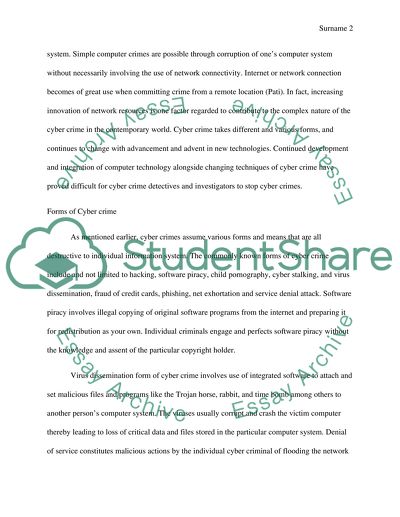Cite this document
(“Criminology: Cyber Crime Research Paper Example | Topics and Well Written Essays - 2000 words”, n.d.)
Criminology: Cyber Crime Research Paper Example | Topics and Well Written Essays - 2000 words. Retrieved from https://studentshare.org/law/1449431-criminology-cyber-crime
Criminology: Cyber Crime Research Paper Example | Topics and Well Written Essays - 2000 words. Retrieved from https://studentshare.org/law/1449431-criminology-cyber-crime
(Criminology: Cyber Crime Research Paper Example | Topics and Well Written Essays - 2000 Words)
Criminology: Cyber Crime Research Paper Example | Topics and Well Written Essays - 2000 Words. https://studentshare.org/law/1449431-criminology-cyber-crime.
Criminology: Cyber Crime Research Paper Example | Topics and Well Written Essays - 2000 Words. https://studentshare.org/law/1449431-criminology-cyber-crime.
“Criminology: Cyber Crime Research Paper Example | Topics and Well Written Essays - 2000 Words”, n.d. https://studentshare.org/law/1449431-criminology-cyber-crime.


